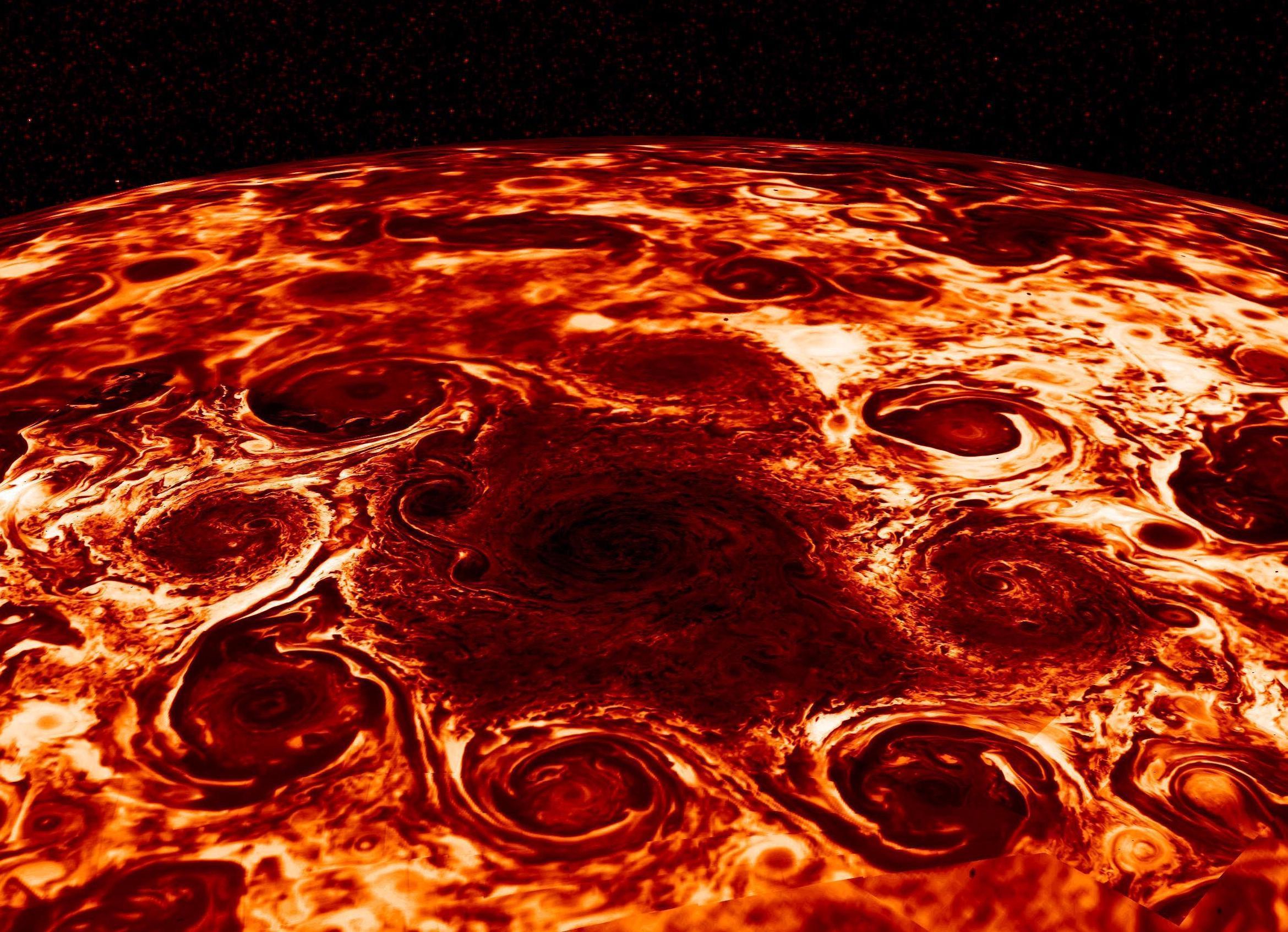Nasa reveals latest pictures of Jupiter, showing planet like nobody has ever seen before
The planet is covered in complex, deep, churning cyclones, new data shows

Your support helps us to tell the story
From reproductive rights to climate change to Big Tech, The Independent is on the ground when the story is developing. Whether it's investigating the financials of Elon Musk's pro-Trump PAC or producing our latest documentary, 'The A Word', which shines a light on the American women fighting for reproductive rights, we know how important it is to parse out the facts from the messaging.
At such a critical moment in US history, we need reporters on the ground. Your donation allows us to keep sending journalists to speak to both sides of the story.
The Independent is trusted by Americans across the entire political spectrum. And unlike many other quality news outlets, we choose not to lock Americans out of our reporting and analysis with paywalls. We believe quality journalism should be available to everyone, paid for by those who can afford it.
Your support makes all the difference.Jupiter is covered in intense, massive storms far more complex than anyone had expected, Nasa has revealed.
The geometric clusters of cyclones that cover the planet's poles are just one of the various discoveries reported by scientists studying data sent back from Nasa's Juno spacecraft, which is circling the planet.
The team has seen the cyclones churning in Jupiter's deep atmosphere in far greater detail than ever before
One group uncovered a constellation of nine cyclones over Jupiter's north pole and six over the south pole. The wind speeds exceed Category 5 hurricane strength in places, reaching 220 mph (350 kph).
The massive storms haven't changed position much — or merged — since observations began.
Team leader Alberto Adriani of Italy's National Institute for Astrophysics in Rome was surprised to find such complex structures. Scientists thought they'd find something similar to the six-sided cloud system spinning over Saturn's north pole.
"We were wrong about it," he said via email.
Instead, they found an octagon-shaped grouping over the north pole, with eight cyclones surrounding one in the middle, and a pentagon-shaped batch over the south pole. Each cyclone measures several thousand miles (kilometers) across.
The fifth planet from our sun, gas giant Jupiter is by far the largest planet in our solar system. Launched in 2011, Juno has been orbiting Jupiter since 2016 and peering beneath the thick ammonia clouds. It's only the second spacecraft to circle the planet; Galileo did it from 1995 to 2003.
Another of the studies in this week's journal Nature finds that Jupiter's crisscrossing east-west jet streams actually penetrate thousands of miles (kilometers) beneath the visible cloud tops. Refined measurements of Jupiter's uneven gravity field enabled the Weizmann Institute of Science's Yohai Kaspi in Rehovot, Israel, and his colleagues to calculate the depth of the jet streams at about 3,000 kilometers, or 1,865 miles.
"The result is a surprise because this indicates that the atmosphere of Jupiter is massive and extends much deeper than we previously expected," Kaspi said in an email.
By better understanding these strong jet streams and the gravity field, Kaspi said scientists can better decipher the core of Jupiter. A similar situation may be occurring at other big gas planets like Saturn, where the atmosphere could be even deeper than Jupiter's, he said.
Jonathan Fortney of the University of California, Santa Cruz, who was not involved in the research, called the findings "extremely robust" and said they show "high-precision measurements of a planet's gravitational field can be used to answer questions of deep planetary dynamics."
Using similar techniques, Juno could help scientists determine the depth of Jupiter's Great Red Spot, a colossal swirling storm, Fortney said in a companion article in the journal.
NASA's Jet Propulsion Laboratory researchers Glenn Orton and Fachreddin Tabataba-Vakili, who both took part in the cyclone study, said all these new discoveries "show Jupiter from a new perspective" unseen before Juno.
"We cannot say how many mysteries are left to uncover," they wrote in an email. "We are already finding way more fascinating results than we ever expected!"
Additional reporting by agencies
Join our commenting forum
Join thought-provoking conversations, follow other Independent readers and see their replies
Comments